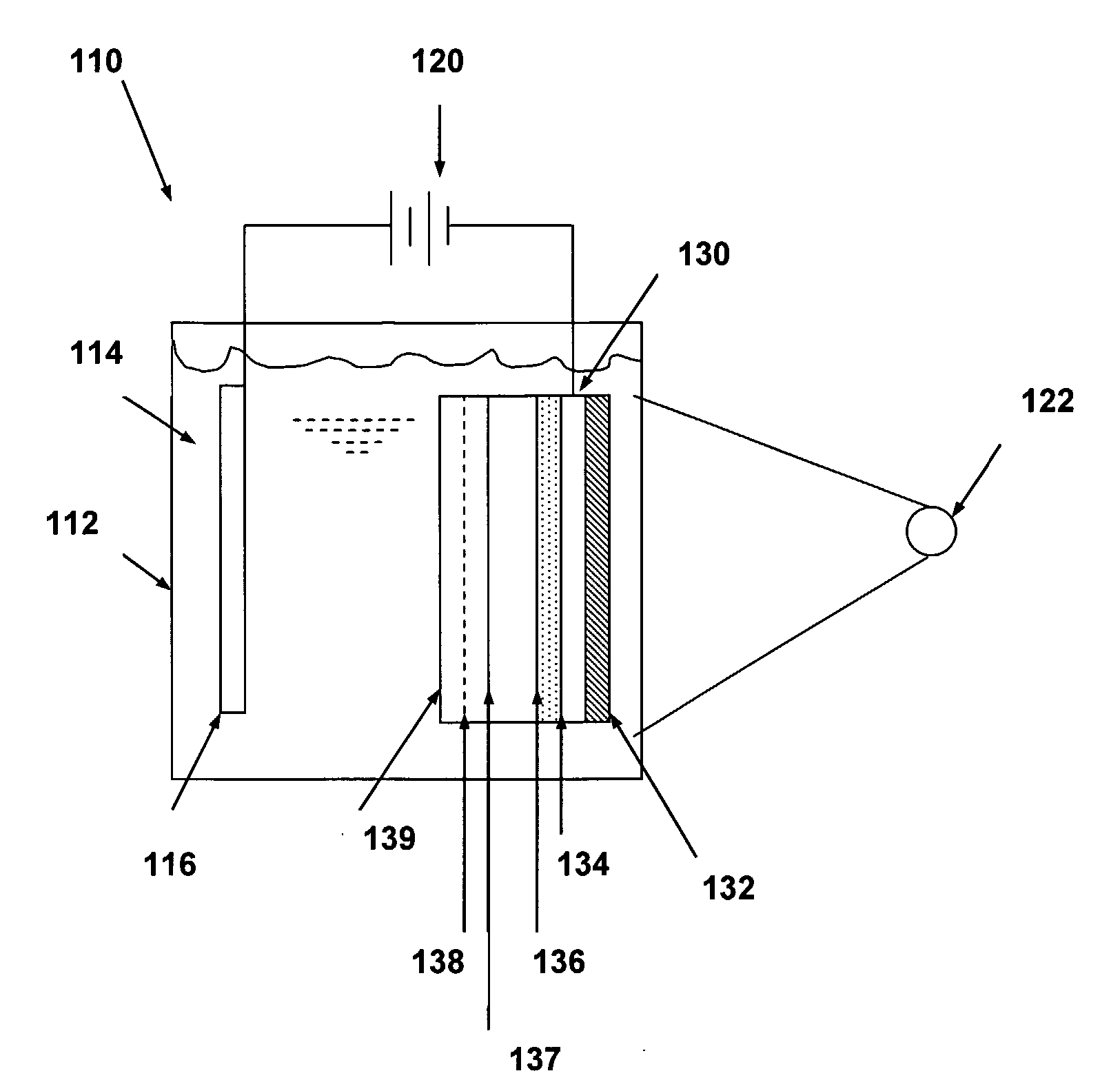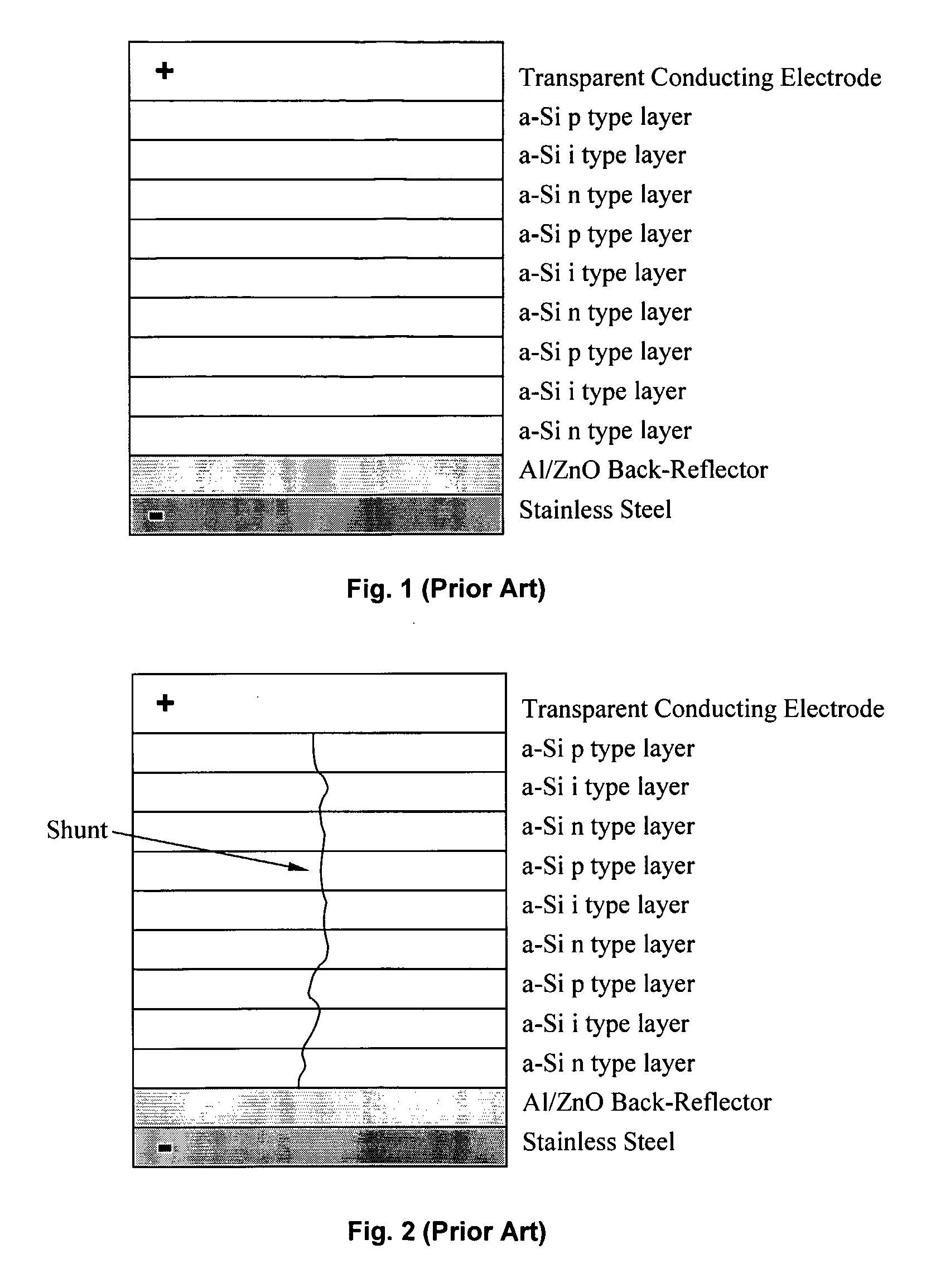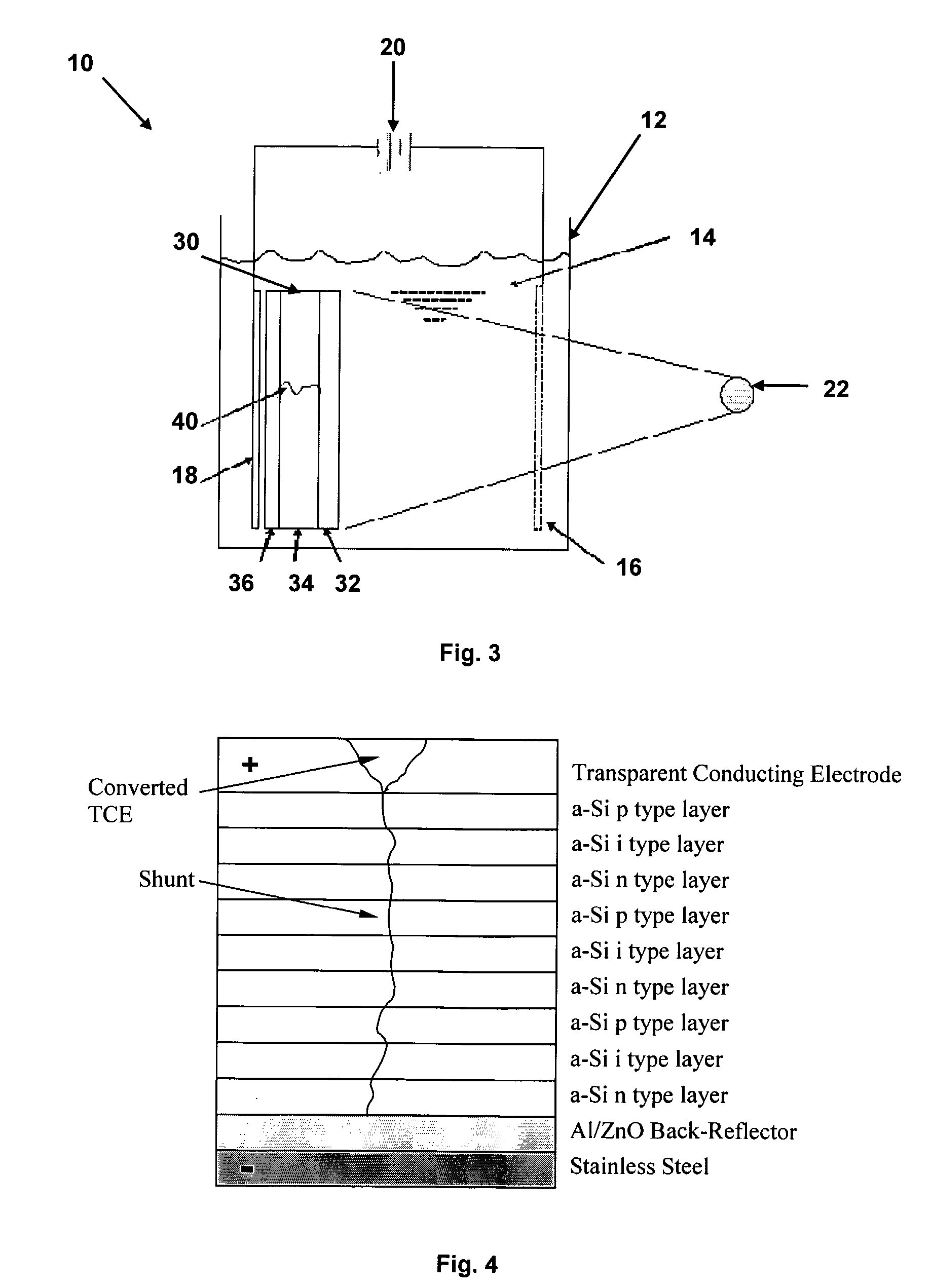Light-Assisted Electrochemical Shunt Passivation for Photovoltaic Devices
- Summary
- Abstract
- Description
- Claims
- Application Information
AI Technical Summary
Benefits of technology
Problems solved by technology
Method used
Image
Examples
example i
[0076]FIG. 5a is a graph showing the current-voltage characteristics of a shunted a-Si triple junction solar cell, before shunt passivation, for a first material, GD1065-1.
[0077]FIG. 5b is a graph showing the current-voltage characteristics of the same solar cell, after shunt passivation, for a first material, GD1065-1.
[0078] FIGS. 5(a) and 5(b) show one example of the shunt passivation performed by the method described herein on an amorphous silicon triple junction solar cell.
[0079]FIG. 5(a) shows the dark and illuminated current-voltage characteristics of the cell before shunt passivation. The curves indicate that the cell has a low shunt resistance, and consequently a low room light open circuit voltage, low fill factor and low efficiency. Such a cell is generally considered “dead”.
[0080]FIG. 5(b) shows the current-voltage characteristics of the same cell after shunt passivation. The fill factor increased from 26% to 56% and the efficiency from 1.3% to 6.7%. Open circuit volt...
example ii
[0081]FIG. 5c is a graph showing the current-voltage characteristics of a shunted a-Si triple junction solar cell, before shunt passivation, for a second material, GD1065-3.
[0082]FIG. 5d is a graph showing the current-voltage characteristics of the same solar cell, after shunt passivation, for a second material, GD1065-3.
[0083] FIGS. 5(c) and 5(d) show the current-voltage curves for another triple junction amorphous silicon cell before and after shunt passivation. FIG. 5(c) shows the current-voltage characteristics of a severely shunted triple junction solar cell. FIG. 5(d) shows the current voltage characteristics of the same cell after shunt passivation. All cell parameters recovered to normal values.
[0084] For both these examples the method of the present invention was used for shunt passivation. A 2 volt, 5 second pulse was applied to the solar cell. Aqueous AlCl3 was used as an electrolyte and illumination was from a tungsten halogen lamp.
example iii
[0085]FIGS. 6a, 6b, 6c and 6d are graphs showing a comparison of the results produced by the method of the present invention (“light”) with those produced by the Nath et al. process (U.S. Pat. No. 4,729,970) (“dark”) on a set of amorphous silicon solar cells. Each point on the graphs is an average of data from three separate samples. The graphs show the relative improvement in the open circuit voltage under AM1 (FIG. 6a), under 5% illumination (“room light”) (FIG. 6b), efficiency (FIG. 6c), and fill factor (FIG. 6d) for both processes, and at different applied electrical biases. The graphs show that there is at least one electrical bias at which the process described here outperforms the prior art process of Nath et al.
[0086] FIGS. 6 (a) through (d) indicate that by using the Nath et al. process (“Dark”), some samples show good improvement, but some samples actually deteriorate relative to their state before shunt passivation. With the process described in the present invention (“L...
PUM
| Property | Measurement | Unit |
|---|---|---|
| Time | aaaaa | aaaaa |
| Electrical conductivity | aaaaa | aaaaa |
| Electric potential / voltage | aaaaa | aaaaa |
Abstract
Description
Claims
Application Information
 Login to View More
Login to View More - R&D
- Intellectual Property
- Life Sciences
- Materials
- Tech Scout
- Unparalleled Data Quality
- Higher Quality Content
- 60% Fewer Hallucinations
Browse by: Latest US Patents, China's latest patents, Technical Efficacy Thesaurus, Application Domain, Technology Topic, Popular Technical Reports.
© 2025 PatSnap. All rights reserved.Legal|Privacy policy|Modern Slavery Act Transparency Statement|Sitemap|About US| Contact US: help@patsnap.com



